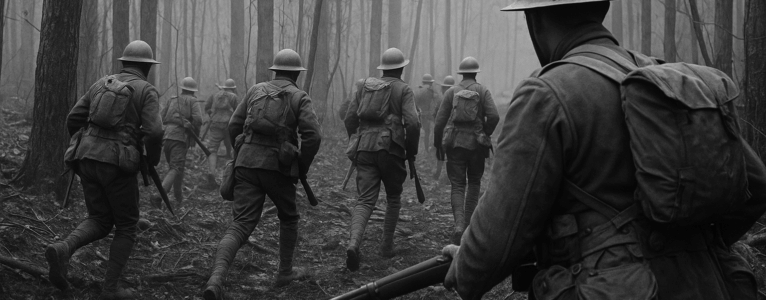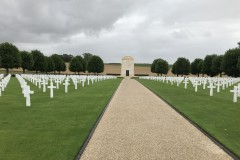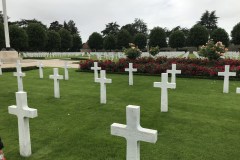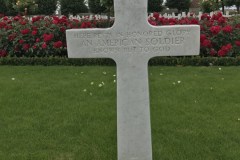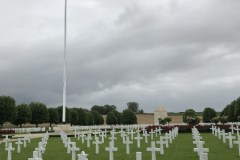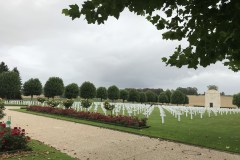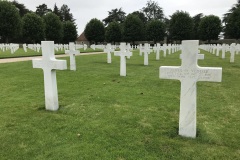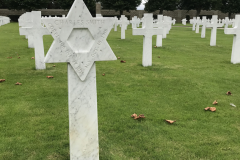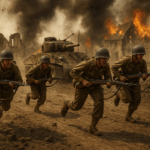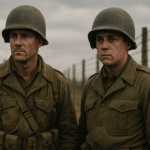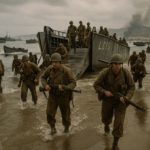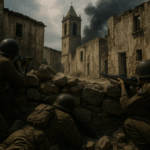September 26 – November 11, 1918 | Meuse-Argonne Forest, France
Over 1.2 million American soldiers fought in the largest and deadliest battle in U.S. military history.
Introduction
When most people think of World War I, trench warfare and European battles like the Somme or Verdun come to mind. But few realize that the United States played a pivotal role in the war’s final chapter. The Meuse-Argonne Offensive, launched on September 26, 1918, marked the U.S. Army’s most significant contribution to the Allied victory, and its bloodiest fight ever.
Background: Why the Meuse-Argonne Mattered
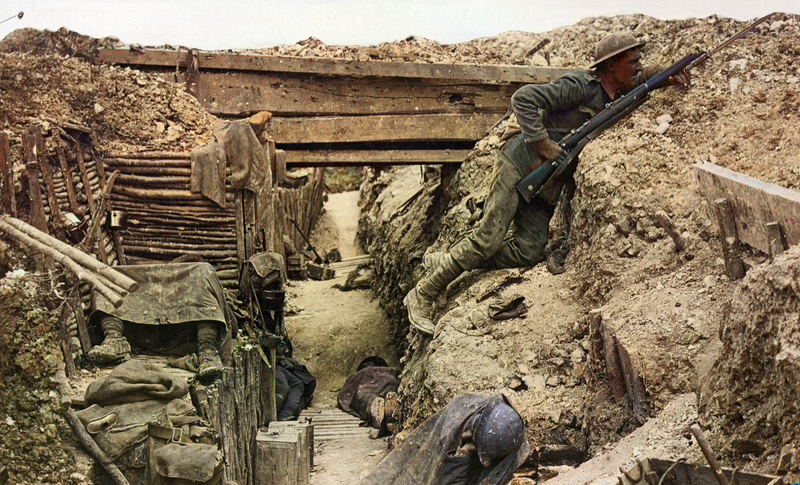
By late 1918, Germany was weakening but still entrenched along the Western Front. General John J. Pershing, commanding the newly formed American First Army, aimed to break through the Hindenburg Line, a formidable German defensive system, and cut the vital Sedan-Mezières rail line, which was supplying the entire German front.
But to do so, American troops had to cross rugged, forested terrain under constant machine-gun, artillery, and gas attacks.
The Plan and the Terrain
- Location: Between the Meuse River and the Argonne Forest in northeastern France.
- Goal: Drive north toward Sedan and force German retreat.
- Challenge: Densely wooded hills, deep ravines, mud, barbed wire, and dug-in German positions.
The offensive would unfold in three main phases, with coordination between U.S. and French forces.
American Divisions involved in the Initial Assault:
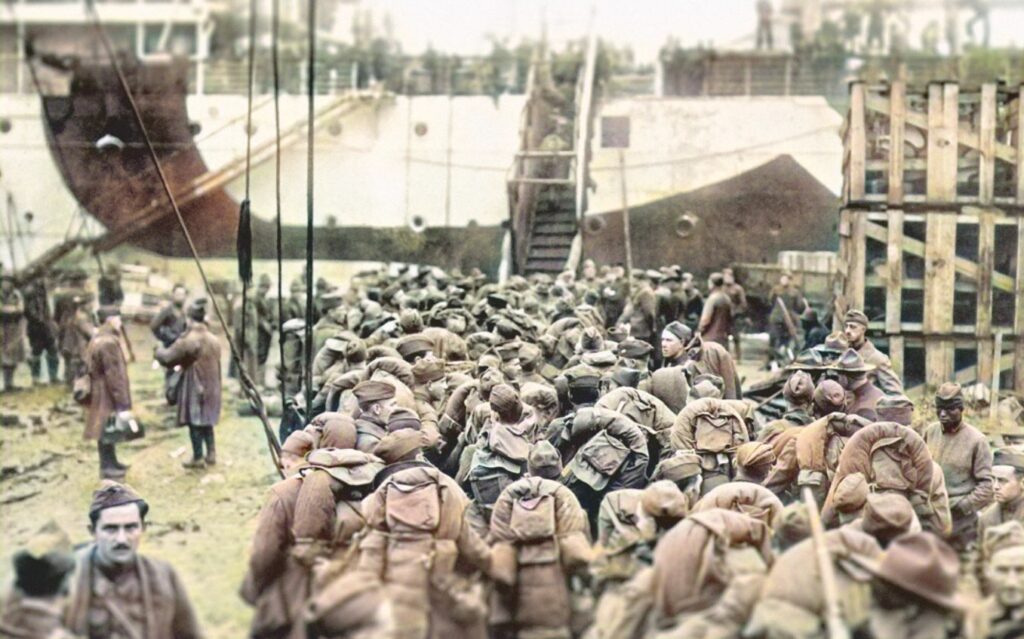
I Corps (Maj. Gen. Hunter Liggett) – Left (west) flank
- 28th Infantry Division (Pennsylvania National Guard)
- 35th Infantry Division (Missouri & Kansas National Guard)
- 77th Infantry Division (New York draftees – “Statue of Liberty Division”)
III Corps (Maj. Gen. Robert L. Bullard) – Center
- 4th Infantry Division (Regular Army)
- 33rd Infantry Division (Illinois National Guard)
- 80th Infantry Division (Pennsylvania, Virginia, West Virginia draftees)
V Corps (Maj. Gen. George H. Cameron) – Right (east) flank
- 37th Infantry Division (Ohio National Guard)
- 79th Infantry Division (Mid-Atlantic draftees – Pennsylvania, Maryland, D.C.)
- 91st Infantry Division (Western states – “Wild West Division”)
The offensive began at 5:30 a.m. on September 26, 1918, with a massive artillery barrage.
Phase 1: The First Push, Into the Argonne (September 26 – October 4, 1918)
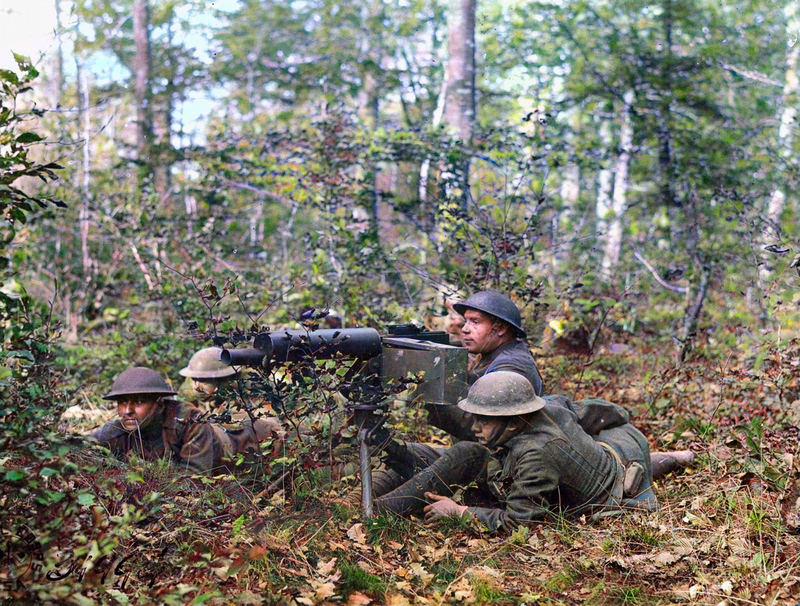
The gray mist clung to the hills and forests as the first American shells screamed toward the German lines. It was 5:30 a.m. on September 26, 1918, when the U.S. First Army launched its largest and most ambitious operation of the war. The Meuse-Argonne Offensive had begun.
For weeks, doughboys had been preparing. The trenches were wet and cold, the mud clung to their boots, and the tension was nearly unbearable. The American high command, under General John J. Pershing, believed that if the Germans could be pushed back through the tangled terrain between the Meuse River and the Argonne Forest, the enemy’s supply lines would collapse, and the war could be ended before winter.
The Assault Begins
The offensive opened with a massive artillery barrage, lighting up the horizon from behind the American lines. Over 2,700 guns roared in unison, pounding German positions across a 20-mile front. As the barrage lifted, wave after wave of American infantry poured into the fire-swept no-man’s land.
On the left flank, near the edges of the dark, tangled Argonne Forest, soldiers of the 77th Division from New York plunged into terrain so dense and disorienting it swallowed entire battalions. Trees were blasted apart, roots clawed at their feet, and machine-gun fire echoed through the ravines. Maps were useless. Compass bearings failed. Still, the men pushed forward, often navigating by instinct and desperation.
Beside them, the 28th Division from Pennsylvania battled toward the village of Apremont, their advance slowed by muddy slopes and German sniper fire. The 35th Division, made up of National Guardsmen from Missouri and Kansas, surged toward Varennes and Charpentry. They advanced fast, too fast. With little coordination and weak staff leadership, the 35th quickly found itself in chaos. Machine guns chewed through their ranks. Supplies and artillery lagged behind. Within days, the division was bloodied and exhausted. By October 1, it had to be pulled from the line.
The Struggle for Montfaucon
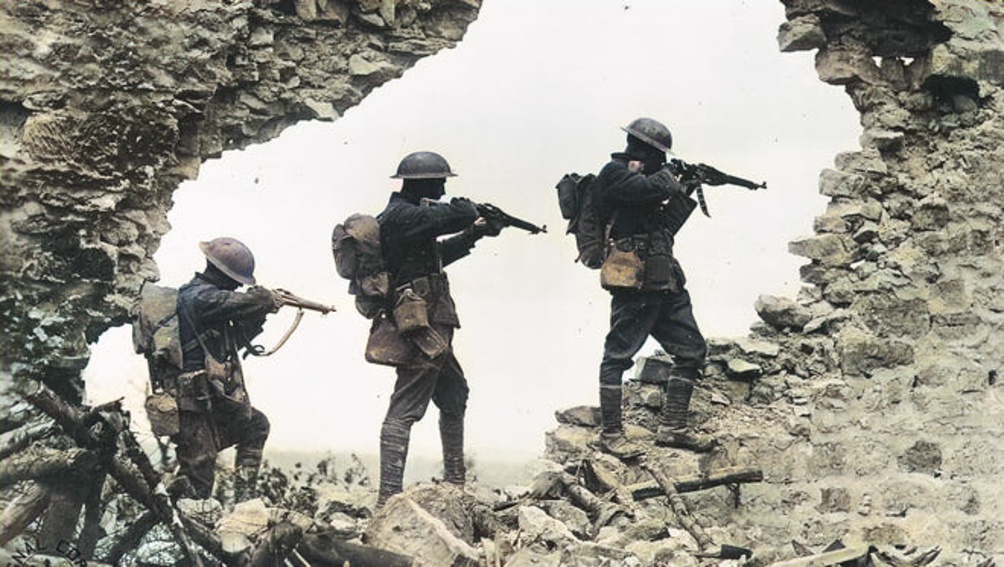
At the center of the line, the Germans had made Montfaucon d’Argonne into a fortress. From its hilltop, they could observe for miles , and direct deadly fire on advancing Americans. The task of seizing it fell to the 4th Division, supported by the 80th and 33rd Divisions.
The fighting was brutal. Montfaucon’s slopes were laced with wire and pillboxes, and German machine gunners held their ground until the very last moment. The Americans fought uphill through mud, shrapnel, and gas. After two days of savage combat, the 4th Division took Montfaucon, but the delay allowed German forces to regroup further north, stiffening the defense.
The 80th Division, composed of men from Pennsylvania, Virginia, and West Virginia, slogged through towns like Nantillois, battling block-by-block, always under fire. The 33rd Division, made up of Illinois National Guardsmen, advanced alongside French units in a deadly waltz of artillery and infantry tactics.
The Right Flank’s Rush and Its Cost
To the east, along the Meuse River, the 91st Division surged forward with stunning speed, overrunning several German outposts. Nicknamed the “Wild West Division,” these men from California, Washington, and Oregon fought with reckless courage. But speed came at a price, units advanced so far ahead they became isolated, their flanks exposed to German counterattacks.
Meanwhile, the 79th Division faced its own nightmare. Ordered to capture part of Montfaucon, the inexperienced unit lacked proper maps and communications. Units got lost. Artillery fell short. And still, inch by inch, they drove forward. The 37th Division, hailing from Ohio, joined the push toward the town of Cierges, battling fortified bunkers and enduring days of ceaseless rain and shelling.
Courage Amid Chaos
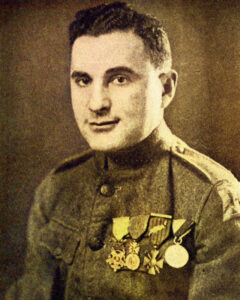
Throughout the first phase, the U.S. Army suffered from its inexperience in modern warfare. Coordinating infantry, tanks, and artillery proved nearly impossible. Communications collapsed under German shellfire. Runners were wounded or lost. Field telephones went dead. In the dense woods of the Argonne, even officers had no clear picture of where friend or foe stood.
Yet amid the confusion and bloodshed, stories of heroism emerged.
At one point, Sergeant Benjamin Kaufman of the 79th Division, wounded and alone, charged a German machine-gun nest with his pistol. He killed the crew, seized the gun, and turned it on retreating Germans. For this, he would earn the Medal of Honor.
And then there were the small, quiet acts: a private dragging his friend to safety under fire. A sergeant rallying his men in a trench full of the wounded. A company that refused to retreat, even when surrounded.
A Hard-Won Advance
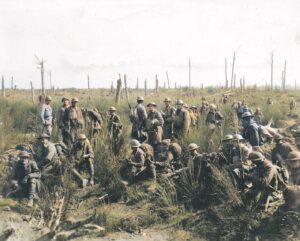
By October 4, after nine days of relentless combat, the U.S. First Army had advanced 6 to 8 miles in some sectors. The cost was staggering, over 40,000 American casualties. Entire divisions had been shattered. Soldiers were filthy, exhausted, and numb.
But they had breached the first two German defensive lines and stood at the gates of the Kriemhilde Stellung, one of the most formidable defensive positions of the Western Front.
The Germans, though battered, were not broken. Reinforcements arrived daily. The woods still bristled with guns and barbed wire. And deeper inside the Argonne, the “Lost Battalion” of the 77th Division would soon face one of the most harrowing ordeals in American military history.
Phase 1 had ended. The road to Sedan , and to victory would demand even more blood.
Phase 2: Into the Teeth of the Kriemhilde Line (October 5 – 28, 1918)
The hills of northern France were soaked with blood, mud, and cordite smoke. The American First Army had survived its baptism of fire in the Argonne, but the hardest fight still lay ahead. The Germans, falling back but far from beaten, now anchored their defense on a fearsome stretch of terrain known as the Kriemhilde Stellung, the heart of the Hindenburg Line.
After the initial offensive stalled in early October, General John J. Pershing knew he needed to rearm, reorganize, and reinforce. Entire divisions, like the 35th and 91st , had been mauled in Phase 1. The exhausted men of the 28th, 79th, and 80th Divisions needed rest. Into the breach came some of the finest and most battle-tested troops the U.S. Army had to offer.
Fresh Blood, Hardened Steel

Among the reinforcements arriving at the front were the 1st Infantry Division, the legendary “Big Red One”, along with the 2nd Division, which included both U.S. Army and Marine units, and the 82nd Infantry Division, whose ranks included a young Corporal Alvin York of Tennessee.
These divisions brought with them something the initial wave lacked: experience. The 1st Division had stormed Cantigny, fought at Soissons, and carved through St. Mihiel. The 2nd Division had earned glory at Belleau Wood. And now, in October, they were thrown headfirst into the crucible of the Argonne.
The plan was clear but daunting: break through the Kriemhilde Stellung and push north toward the rail hub at Sedan, severing Germany’s arteries on the Western Front.
Montrebeau Wood and Exermont: Slaughter in the Fog
The 1st Division was sent into the line near Exermont and Montrebeau Wood, where Germans had dug themselves into rocky slopes and forests thick with barbed wire and machine-gun nests. From October 7, the Big Red One fought tooth and nail, advancing yard by yard under constant artillery fire. The men endured poison gas, sniper fire, and counterattacks launched under the cover of fog and smoke.
Despite the resistance, they did what others could not: break the Kriemhilde Line.
South of them, the 82nd Division, green and untested, attacked toward Cornay and La Forge Farm. On October 8, in a rain-drenched forest, Corporal Alvin York and a small patrol stumbled into a German machine-gun nest. Trapped and outnumbered, York advanced alone, picking off gunners with a rifle and sidearm. When the smoke cleared, York had killed over 20 enemy soldiers and captured 132 more. It would become the most famous single action of the war by an American.
The 2nd Division and Blanc Mont Ridge
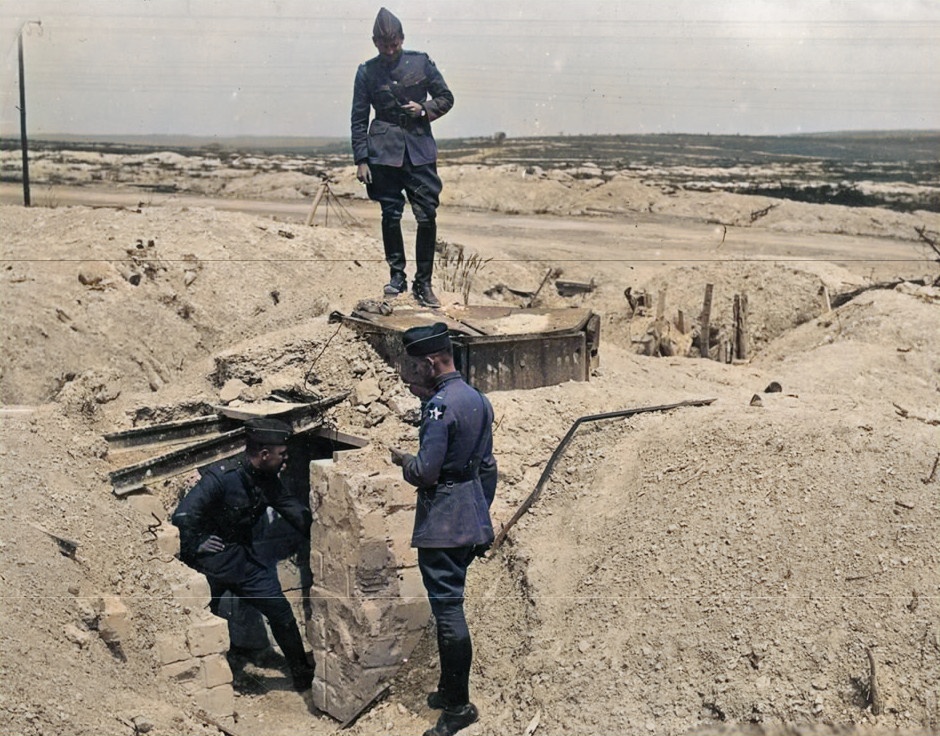
To the west, elements of the 2nd Division, fighting alongside French troops, launched an assault on Blanc Mont Ridge. The ridge overlooked key German supply routes and had been heavily fortified for years.
On October 3, the Marines of the 2nd stormed the ridge in one of the fiercest assaults of the campaign. Wave after wave of men climbed the slopes under machine-gun fire. The Germans counterattacked repeatedly, but the ridge held. Over 7,000 American casualties were recorded in just a few days, but the position was taken.
The Lost Battalion: A Symbol of Grit
While large-scale attacks raged across the front, a harrowing drama unfolded deep in the Argonne Forest. From October 2–7, around 550 men of the 308th Infantry, part of the 77th Division, were cut off behind German lines in a ravine near Charlevaux Mill.
Known now as the “Lost Battalion,” these men were surrounded, shelled by their own artillery, and refused to surrender despite being starved, out of water, and constantly under attack. When rescue finally came, only 194 walked out.
Their story of defiance, endurance, and sacrifice spread quickly. It was a moment of agony, but also pride. It showed the world that the American soldier would not break.
A Relentless Grind

Throughout October, the fighting continued, not in great sweeping maneuvers, but in brutal, grinding advances of a few hundred yards at a time. The Americans had learned from their early mistakes. Artillery and infantry now moved in coordination. Engineers built bridges under fire. Aerial reconnaissance guided field guns. Logistics improved, and Pershing’s generals, especially Hunter Liggett and Charles Summerall began directing more sophisticated assaults.
But the cost was staggering.
Rain fell endlessly. Roads turned to soup. Ammunition failed to arrive. Food ran short. Shell shock spread through the lines. Yet the Americans, many of whom had never seen Europe before the war, kept pushing forward driven by discipline, momentum, and the belief that every mile won was a mile closer to peace.
By October 28, the Americans had fully breached the Kriemhilde Stellung, forcing the Germans to fall back toward Sedan. The front was breaking. German morale was crumbling. And Allied pressure, French, British, and American, was now relentless along the entire Western Front.
The Cost of Progress
Phase 2 of the Meuse-Argonne Offensive cost the Americans tens of thousands of casualties. But it also proved something vital: that the U.S. Army, just months after arriving in Europe, could go toe-to-toe with the most hardened German troops and win.
It had taken raw courage, bitter sacrifice, and constant adaptation, but the breakthrough had been achieved.
The final phase was now at hand. Sedan lay ahead, and with it, the collapse of the German war machine.

Tell them we’re holding. Tell them we’re dying, but we’re holding.
– An unnamed runner from the 35th Division
Phase 3: The Road to Sedan (October 28 – November 11, 1918)
The final push. The last gasp. The American First Army would fight through hell to reach Sedan and break the German war machine once and for all.

By late October 1918, the fog of war lifted just enough to reveal a hard truth: the German army was unraveling.
The Kriemhilde Stellung had been pierced. The Americans had clawed through the forests, hills, and fortified ridges that had once seemed unbreakable. But the enemy still held fast to key terrain. And so, with winter looming and disease spreading through the trenches, General John J. Pershing ordered one final drive, a relentless assault designed to reach Sedan, sever Germany’s supply arteries, and bring the war to a close.
Gathering for the Kill
The American First Army was now swollen with experience and momentum. I Corps, V Corps, and III Corps had been reinforced and reshuffled, incorporating some of the Army’s best-performing units, the 1st, 2nd, 42nd, and 89th Divisions among them.
These troops were no longer green. They were hardened. Their uniforms were worn to threads, boots crusted with clay, and eyes rimmed red from gas, fatigue, and grief. But they moved with purpose. Every man knew: the end was near.
Barricourt Heights and the Breaking Point
On November 1, the First Army launched its final offensive across a wide front. The target was Barricourt Heights, the last dominant ridge shielding Sedan and the vital Carignan-Sedan railway line, the spinal cord of the German position in France.
The assault began with thunder. American artillery, more accurate now, blanketed German trenches in fire and shrapnel. Infantry surged forward behind rolling barrages. It wasn’t easy. Rain and fog returned. German machine guns still sang from wooded hills. But the Americans fought with fury.
The 1st Division, leading the charge, smashed into the German line and refused to stop. To their right, the 42nd “Rainbow” Division, made up of National Guard troops from across the U.S., fought bitterly to seize Landres-et-St. Georges and clear the Meuse River bank.
By November 4, Barricourt Heights fell. The path to Sedan lay open.
Sedan: The Strategic Prize

Pershing’s objective was not the city itself, but the rail junctions just beyond it, crucial to the German army’s logistics. To take them, the First Army needed to cross the Meuse River, overcome the last defensive positions, and seize the high ground.
But this time, an unexpected complication arose, not from the enemy, but from the French High Command. Marshal Foch and other Allied leaders wanted the French to retake Sedan for symbolic reasons. Pershing, always protective of American autonomy, ordered his men to push up to the outskirts, but no further, at least not without permission.
It created friction. Units of the 5th and 1st Divisions found themselves within sight of the prize, halted by politics as much as by resistance. Some commanders pressed ahead anyway, under the fog of war. The push continued until the final hour.
Across the Meuse and Toward Peace
As the Americans advanced, German resistance crumbled. Soldiers surrendered in droves. Trenches were abandoned. Entire units vanished into the forest. Some fought to the last, but the spirit of the Kaiser’s army had been broken.
On the night of November 10, units of the 89th Division and 5th Division crossed the Meuse River under fire, establishing bridgeheads. They took Stenay, one of the last towns held by the Germans.
And then came the whisper. Orders spread through the trenches like a miracle: an armistice would begin at 11:00 a.m. on November 11.
That morning, American troops attacked one last time. In some sectors, guns fired until the stroke of 11. Men died, needlessly, some would argue in the final minutes. But at 11:00 sharp, the battlefield went still.
The Meuse-Argonne Offensive was over.
The Cost and the Legacy
The offensive lasted 47 days. The United States had committed over 1.2 million troops, the largest battle in U.S. history to that point.
- Over 26,000 Americans were killed
- 95,000 were wounded
- German casualties were comparable, if not higher
The Meuse-Argonne became not just a battlefield, but a crucible, the moment the U.S. Army proved it could wage modern war. American leadership, though flawed at times, had grown. Soldiers had faced trench warfare, gas, artillery, and close-quarters battle and had endured.
The Final March
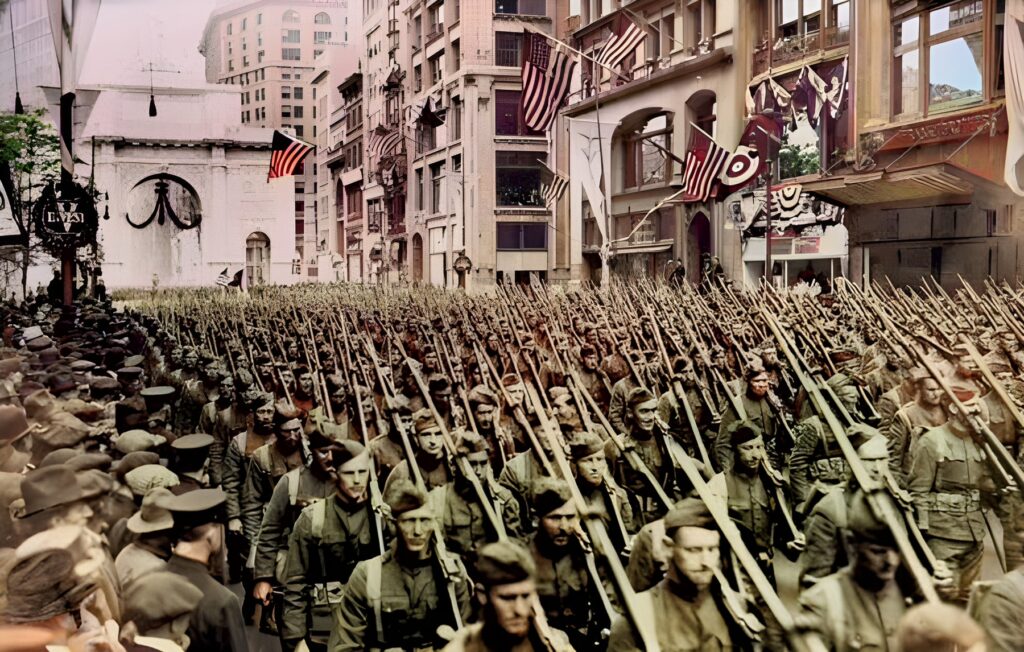
In the weeks that followed, the soldiers marched east, occupying German territory. For many, the war had changed them. For some, it had cost everything.
The Meuse-Argonne Offensive remains the most massive and deadly battle ever fought by the United States. But it was also the moment the nation stepped onto the world stage, not just as a participant, but as a power
Why It Still Matters
The Meuse-Argonne Offensive is often overshadowed by later wars, but it was a defining moment in U.S. military history. The lessons of leadership, logistics, and courage under fire shaped the Army for generations. It was America’s trial by fire on the world stage, and its cost was staggering.
Visiting Today
You can visit the Meuse-Argonne American Cemetery near Romagne-sous-Montfaucon, the largest American cemetery in Europe. The rolling fields and silent rows of white crosses remind visitors of the terrible price of war.

